Academic
1976 – 1984 Study of Biology at the University of Hannover
1987 Dr. rer. nat. (summa cum laude) in Botany, supervised by Prof. Klaus Kloppstech Institute of Botany, University of Hannover
1993 Habilitation in Plant Physiology, University of Hannover, mentored by Prof. Klaus Kloppstech and Prof. Diter von Wettstein
Professional career
Since 2001 Professor (C4) of Plant Physiology at the Institute of Biology, Humboldt-Universität zu Berlin
1992 – 2000 Group leader at the Institute of Plant Genetics and Crop Plant Research, Department of Molecular Plant Physiology, IPK Gatersleben
1987 – 1992 Postdoc and Research Assistant at the Carlsberg Laboratory, Department of Plant Physiology, Copenhagen, Denmark
Since 2016 Dean of the Life Science Faculty
2014 – 2016 Vice Dean for Research in the Life Science Faculty
2011 Co-Organizer of the Conference of the German Botanical Society in Berlin
2007 – 2013 Speaker of the DFG Research Unit “Retrograde Signaling in Plants”
2004 – 2007 Acting Director of the Institute of Biology, Humboldt-Universität zu Berlin
2003 – 2004, Vice Director of the institute of Biology, Humboldt-Universität zu Berlin
2002 – 2016 Member of the Council of the Institute of Biology, Humboldt-Universität zu Berlin
Selected publications
- Guo-Zhang Wu, Etienne Meyer, Andreas Richter, Maja Schuster, Qihua Ling, Mark Aurel Schoettler, Dirk Walther, Reimo Zoschke, Bernhard Grimm, R. Jarvis, and Ralph Bock (2019) Control of Retrograde Signaling by Protein Import and Cytosolic Folding Stress» accepted for publication in Nature Plants (Reference : #NPLANTS-18075039C
- Pawel Brzezowski, Brigitte Ksas, Michel Havaux, Bernhard Grimm, Marie Chazaux, Gilles Peltier, Xenie Johnson and Jean Alric. (2019) The function of PROTOPORPHYRINOGEN IX OXIDASE in chlorophyll biosynthesis requires oxidised plastoquinone in Chlamydomonas reinhardtii» accepted for publication in Communications Biology (Reference of COMMSBIO-18-1076B)
- Wang P, Liang FC, Wittmann D, Siegel A, Shan SO, Grimm B. Chloroplast SRP43 acts as a chaperone for glutamyl-tRNA reductase, the rate-limiting enzyme in tetrapyrrole biosynthesis. Proc Natl Acad Sci U S A. 2018 115(15): E3588-E3596
- Hey D, Grimm B. ONE-HELIX PROTEIN2 (OHP2) Is Required for the Stability of OHP1 and Assembly Factor HCF244 and Is Functionally Linked to PSII Biogenesis. Plant Physiol. 2018 177(4): 1453-14725. Schlicke H, Salinas Hartwig A, Firtzlaff V, Richter AS, Glässer C, Mayer K, Finkemeier I, Grimm B. (2014) Induced deactivation of genes encoding chlorophyll biosynthesis enzymes disentangles tetrapyrrole-mediated retrograde signalling. Mol Plant7:1211-12276. Zhang F, Tang W, Hedtke B, Zhong L, Liu L, Peng L, Lu C, Grimm B and Lin R (2014) Tetrapyrrole biosynthetic enzyme protoporphyrinogen IX oxidase 1 is required for plastid RNA editing. Proc Natl Acad Sci U S A111: 2023-20287. Kim S, Schlicke H, Van Ree K, Karvonen K, Subramaniam A, Richter A, Grimm B and Braam J (2013) Arabidopsis chlorophyll biosynthesis: an essential balance between the methylerythritol phosphate and tetrapyrrole pathways. Plant Cell 25: 4984-4993
- Czarnecki O, Hedtke B, Melzer M, Rothbart M, Richter A, Schröter Y, Pfannschmidt T, Grimm B (2011) An Arabidopsis GluTR Binding Protein Mediates Spatial Separation of 5-Aminolevulinic Acid Synthesis in Chloroplasts. Plant Cell 23: 4476-4491
- Tanaka R, Rothbart M, Oka S, Shibata M, Myouga T, Motohashi R, Shinozaki K, Grimm B and Tanaka A(2010) LIL3, an LHC-like protein, plays an essential role in chlorophyll and tocopherol biosynthesis by stabilizing geranylgeranyl reductase in Arabidopsis thaliana Proc Natl Acad Sci USA 107: 16721-16725
- Kruse E, Mock H-P and Grimm B (1995) Reduction of coproporphyrinogen level by antisense RNA synthesis leads to deregulated gene expression of plastid proteins and affects the oxidative defense system. EMBO J 14: 3712-3720
Abstract
The tetrapyrrole biosynthetic pathway provides the vital cofactors and pigments for photoautotrophic growth (chlorophyll), several essential redox reactions in electron transport chains (heme), the N- and S-assimilation (siroheme) and photomorphogenic processes (phytochromobilin). While the biochemistry of the pathway is well understood and almost all genes encoding enzymes of tetrapyrrole biosynthesis have been identified in plants, the posttranslational control and organization of the pathway is currently under intensive exploration. Posttranslational mechanisms controlling the metabolic activities of tetrapyrrole of synthesis are of particular importance, since this pathway needs a tight adaptation to environmental challenges to ensure adequate synthesis of end-products and the avoidance of accumulation of photodynamic metabolic intermediates at any time of development and environmental condition. Using the example of glutamyl-tRNA reductase (GluTR), the rate-limiting enzyme in tetrapyrrole biosynthesis, multiple posttranslational mechanisms will be presented that control activity, stability, protein-protein interaction and subcompartmental localization of a single enzyme.



